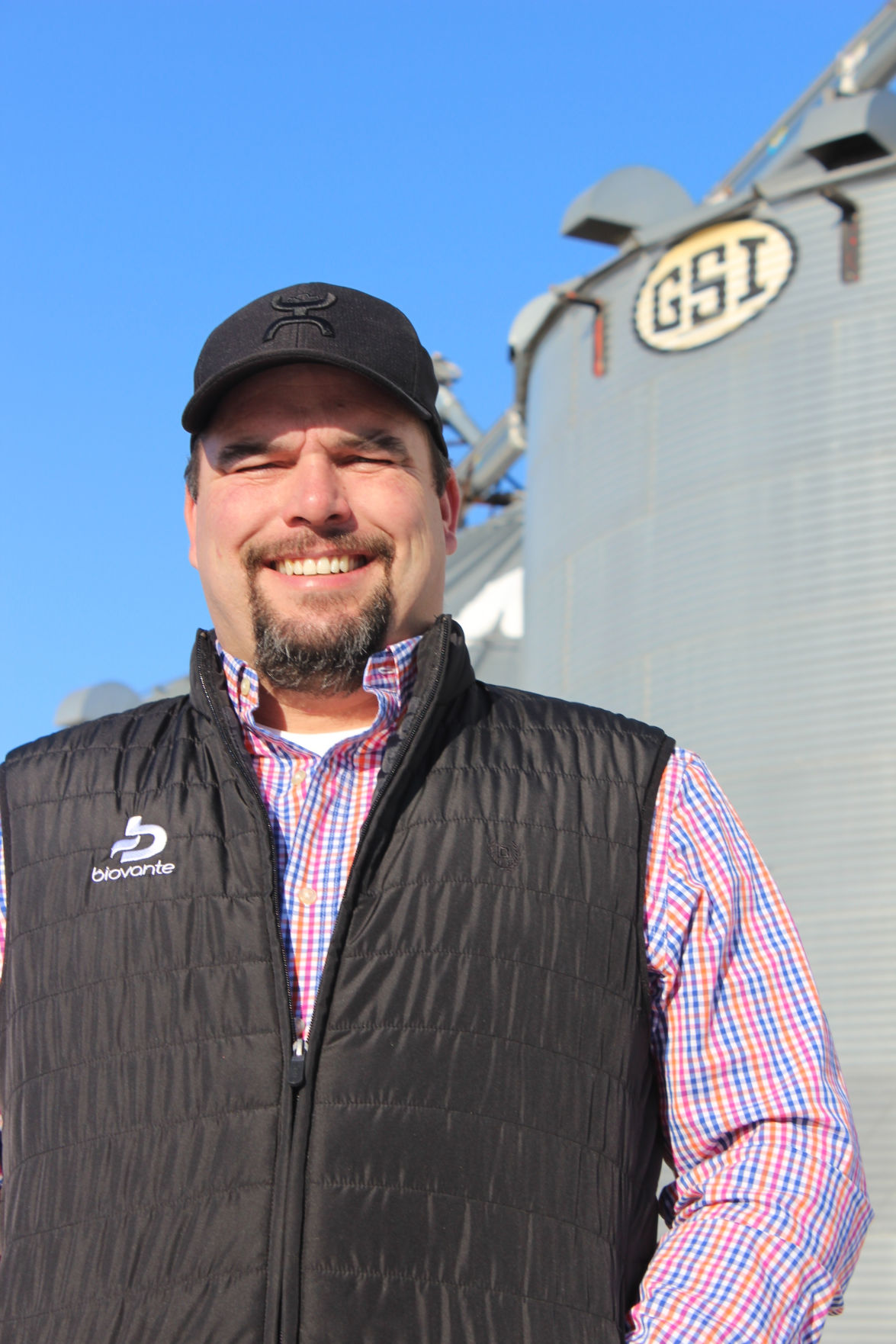Sometimes, less can be more. Jimmy Frederick, Rulo, Nebraska, planted fewer soybeans per acre and ended up with a state record soybean yield in 2017.
“I made quite a few changes last year, starting with plant populations,” Frederick said.
Frederick had been planting 160,000 seeds per acre across his farm. In 2017, he dropped the population to 140,000 seeds per acre on his commercial acres and 115,000 on the 40 acres yield contest field.
“I was a little nervous when I planted these at 115,000 seeds per acre,” Frederick said. “I was pretty skeptical about it.”
Putting more space between the plants increases lateral branching. By decreasing the plant population, Frederick believed he could obtain a higher yield for less money.
“Then I would be able to use that money for my in-furrow applications,” Frederick said.
He was right on both counts. His 40-acre contest field yielded 163.9 bushels per acre, just shy of the 171 bushel per acre world record. By reducing seeds per acre Frederick said he saved $19.50 per acre, which paid for his in-furrow fertilizer treatments.
“What intrigued me the most was the ability to cut back on areas and still go for the yield,” Frederick said.
He had positive results with reduced seed counts on the rest of his farm, too. After the crop podded out, Frederick and his hired hand compared an area with around 100,000 plants per acre to an area with around 145,000 plants per acre. Each of them measured 21 inches. Frederick pulled four plants from 21 inches in the field with 100,000 plants per acre and his hired hand pulled eight plants from 21 inches in the field with 145,000 plants per acre.
“I beat him on pod count,” Frederick said. “He had 713 pods on eight plants and I had 856 pods on four plants.”
The heavy podding and increased laterals were a result of the products used as well as the reduction of seed population.
“There were 60 to 70 pods per lateral and they got so heavy they broke off halfway up the stem. When you start losing 60 to 70 pod laterals it is just crazy,” Frederick said.
Ten years of on-farm research by the University of Nebraska about seeding rates showed similar results. Nebraska research showed reducing the soybean seeding rate from 150,000 to 120,000 seeds per acre can result in a $10.69 per acre savings without affecting yield. The results of 16 studies from 2006 to 2016 showed that for seeding rates of 180,000, 150,000 and 120,000 seeds per acre average yields were 66.9, 66.5 and 66.2 bushels per acre, respectively.
There were some unique challenges associated with the thicker, shorter soybean plants loaded with laterals. The 40-acre contest field was tilled and put up in ridges to keep plants out of the water.
“Some of the laterals started to lay down in the row and just took off running down the row between the ridges,” Frederick said. “You don’t want them falling down because as soon as they fall down it is just a train wreck.”
He was not able to pick them up with the combine when harvest started last fall.
At harvest his combine struggled to process the heavier and thicker stems. He set the concave on 42 and slowed the rotors all the way down.
“We would lift up the chopper and there were bean hulls everywhere from the beans just turning to dust,” Frederick said. “If I had to guess, just from the bean hulls, we had double digit losses coming out the back of the combine.”
Seed spacing is important when going to lower seeding rates. Frederick tried to keep an inch to an inch and a quarter between seeds. He equipped his planter with VDrive meters and VSets from Precision Planting for precise seed placement. According to Fredericks, when seeds are too close together it can reduce the number of laterals.
Frederick began experimenting with biological products about three years ago and this year used them on all of his production acres and the contest acres. In consultation with Chris Masters at Biovante, Frederick used several biological products: Bioflex helps seed germination and early growth; Assist promotes uptake of plant nutrients; Biomate provides energy for the plant; Incite reduces plant stress; Infusion enhances the immune system of the plant and a systemic fungicide called Elixor.
“I could tell where I ran in-furrow treatments and where I did not run in-furrow treatments by the lateral branching and the health of the plants,” Frederick said. “One 50-acre field where I did not use biological products yielded 15 bushels less than the other fields.”
When it comes to using biological products it is not like spraying a field with Roundup. A producer can see the Roundup working after it is sprayed.
‘You have to know what the biological is supposed to do and what you are looking for,” Frederick said. “You need some education to see if they are working.”
This is where consultation with Masters at Biovante was important for Frederick. Moving forward Frederick wants to know what to look for so he can cut out products that did not work this year.
“In the ag economy we are in now, products can’t work just three out of four years, they have to work every year,” Frederick said. “If I am going to spend $10 to $15 an acre I need to get a return or at least get my money back.”
Frederick got more than his money back with lower seed populations this year. Next year he plans to reduce the seed count even further to the 120,000 to 130,000 range across all of his commercial acres.
Doug Rich can be reached at 785-749-5304 or [email protected].



